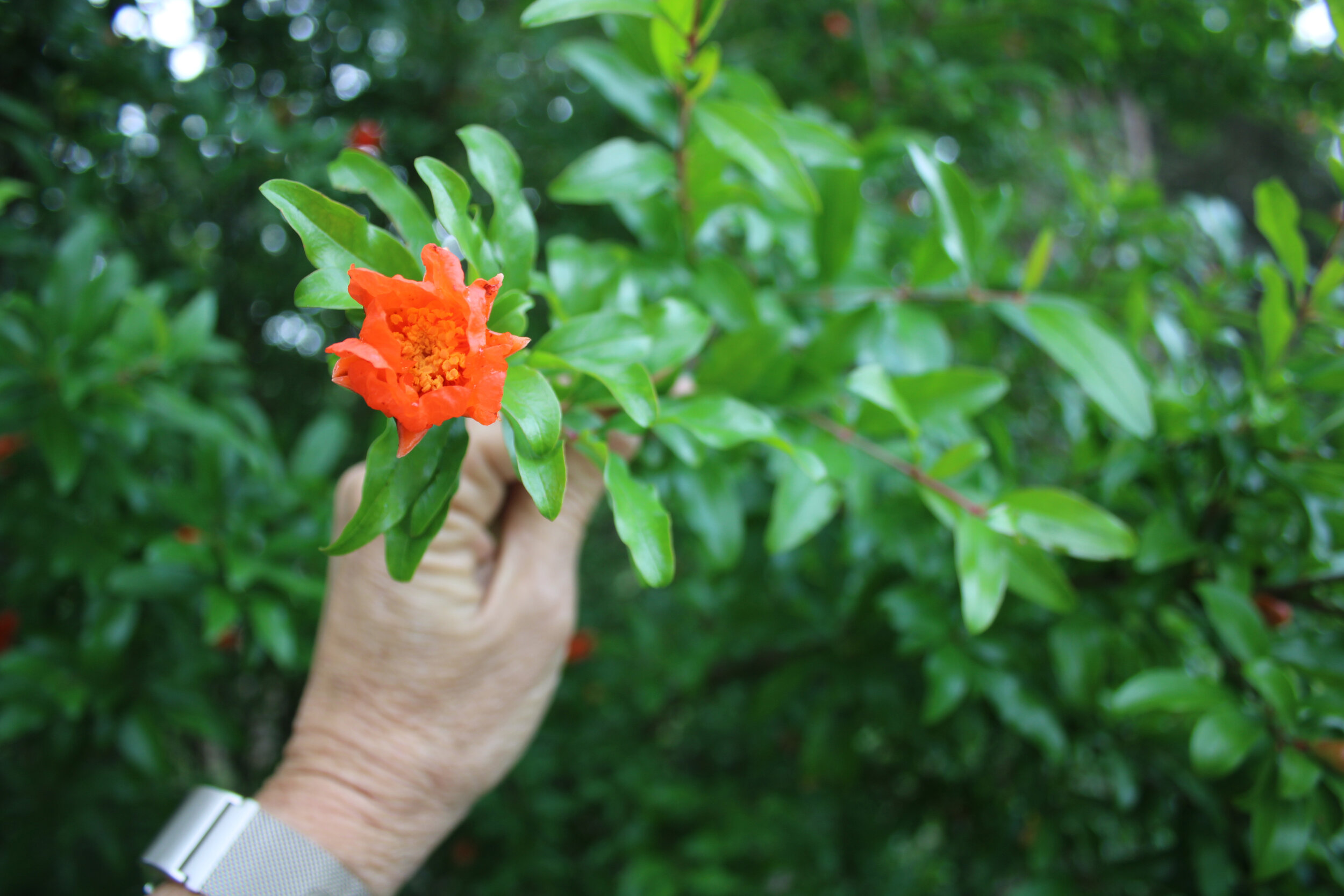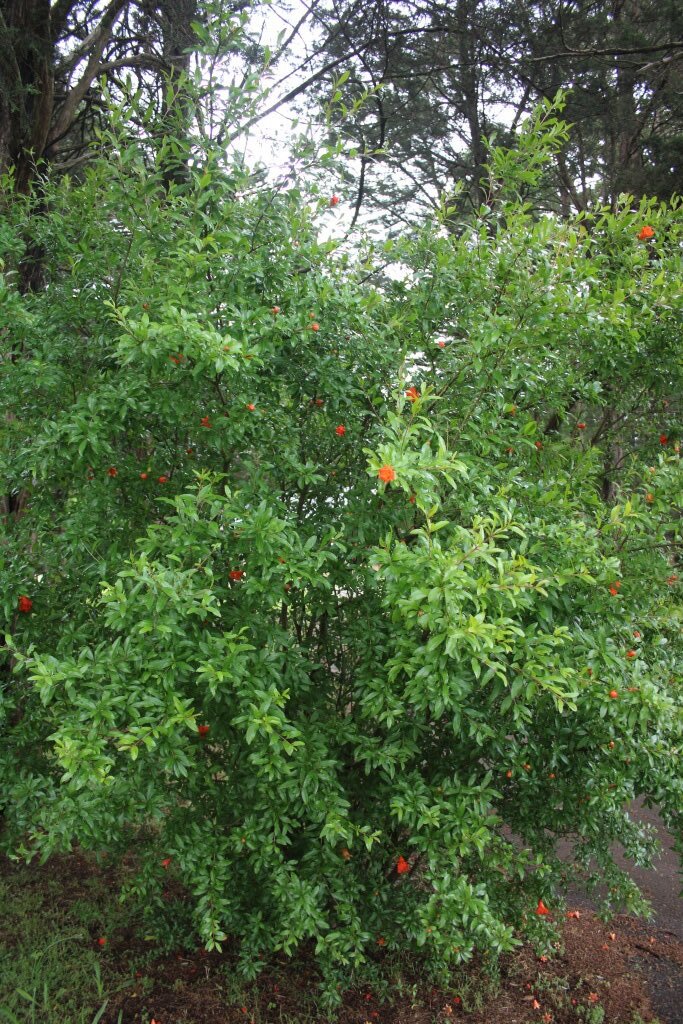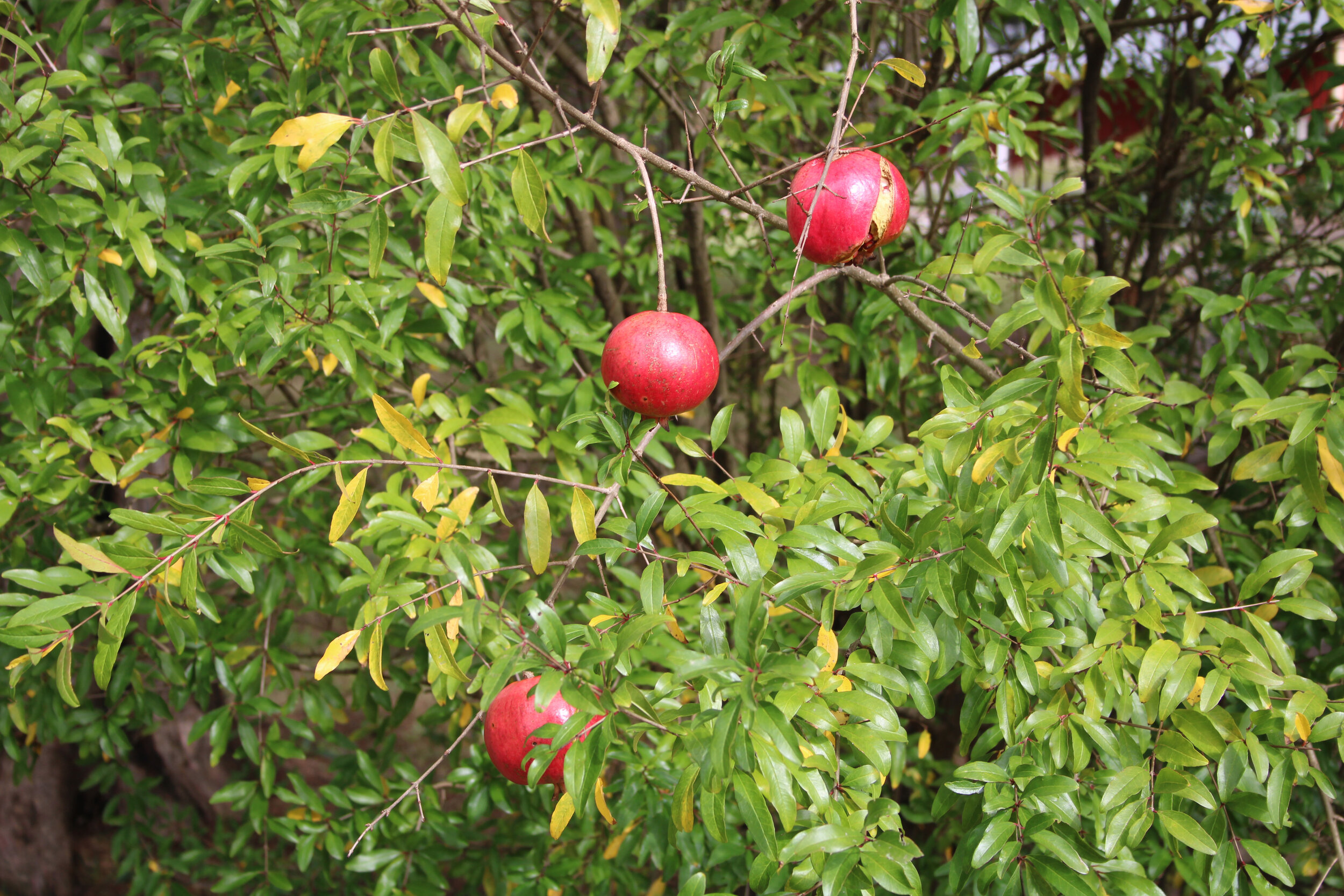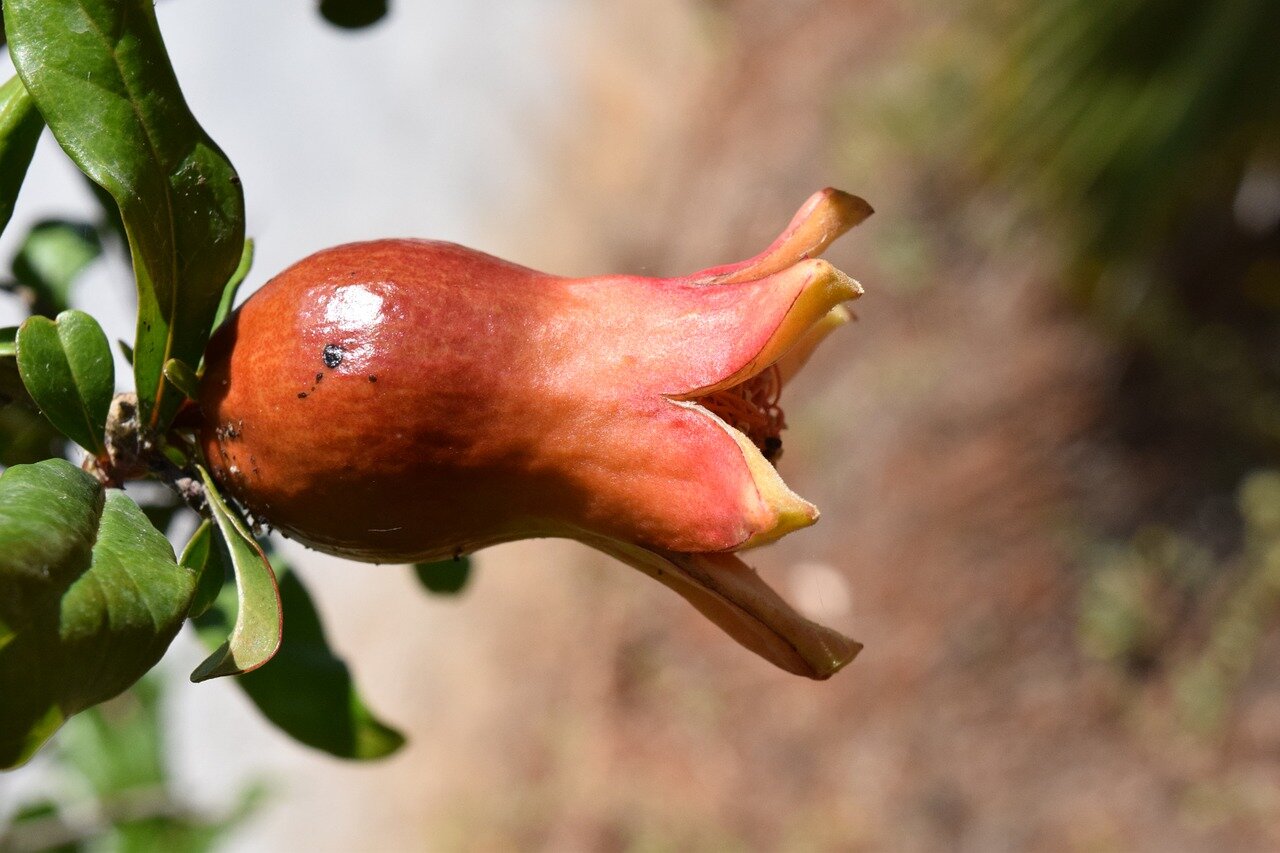One of the prettiest flowering shrubs in the Mary Snoddy garden right now is grown for fruit, not flowers. While pomegranate (Punica granatum) is called a fruit, botanically it is a berry. By definition, a berry is produced from a single flower with one ovary, and may have many or few seeds. (Trivia: pomegranates and cucumbers are berries; strawberries and raspberries are not.)
Grow pomegranate in full sun, moderately fertile soil. They will survive in part sun, but flowering will be less profuse. My plant is over fifty years old. It did not fruit well for several years, but an ice storm brought down some limbs on the surrounding trees and it rebounded when given more sunshine. Once established, pomegranates require little maintenance. They tolerate a wide range of soil types (sand to clay, loam preferred) and acidity (pH 5.5 to 7.2), and are drought tolerant. Irrigation to maintain uniformly moist soil will prevent split fruit when rains follow long periods of dry weather.
Shrubs may reach 15-20 feet. A couple of dwarf cultivars are available. ‘Nana’ is only 2-3 feet tall and makes a showy container specimen, looking especially handsome in a blue container. Pomegranate flowers are usually red-orange with an unusual shape (see the photos). Just before opening, the bulbous buds look like miniature versions of the fruits. The plants flower over a long period. Double-flowered forms exist (‘Pleniflora’ is widely available), but they rarely produce fruit. ‘Utah Sweet’ has orange flowers; ‘Flavescens’ has yellow flowers. Regardless of color and whether single or double, flowers are very attractive to hummingbirds. Leaves turn an attractive yellow in the fall, and hold onto the stems for a long time before they fall. Leaves are small and don’t dictate raking unless the gardener is especially fastidious. Most cultivars are hardy in zones 7b to 10. In especially cold winters, they may die to the ground but resprout from the roots and grow quickly.
Pomegranates bloom on new growth, so a little winter pruning will increase flowers and help keep shrubs neat. Plants tend to spread by suckering, and they can become congested if not thinned occasionally.
Fruits are about the size of a large orange. They ripen August through November. The edible part of the fruit is the soft tissue around the seeds, which are arranged in separate chambers within the leathery exterior skin. The seeds are hard, so eating the yummy part involves a lot of spitting out the inedible portion (not recommended for formal dining occasions), but some newer cultivars (‘Angel Red,’ ‘Eversweet’ and ‘Utah Sweet’) have soft seeds that are swallowed along with the flesh, but the soft-seeded varieties are a little less cold tolerant than the others. Plants labeled “Russian Series” are the most cold tolerant.
In ancient Greece, pomegranates symbolized fertility in some stories but represented death in other tales. Hades supposedly used six pomegranate seeds to trick Persephone into staying six months of the year with him in the underworld. It was called “fruit of the dead” by those who thought that the seeds sprang from the blood of Adonis. Its connotation with fertility arose from its association with Hera, the Greek goddess of marriage and childbirth, and its association with Aphrodite, the Greek goddess of love. Roman women drank pomegranate juice to cure infertility. Some people think that it was a pomegranate, not the apple, the Eve ate and shared with Adam, getting all mankind barred from the Garden of Eden.
While it is no longer considered a magical potion, we recognize the multiple health benefits of pomegranate fruit, usually consumed in the form of juice. The fruit is loaded with good stuff: antioxidants, polyphenols, Vitamin C, potassium, and fiber. A 2019 article in Medical News Today lists 15 benefits, ranging from cancer prevention to heart disease deterrence. Read their full article here, but note that the language stresses what benefit the fruit may have.
Grow pomegranates for the attractive flowers, tasty fruit, pleasant fall color, and ease of culture. The fruits are attractive in fall arrangements. Their coarse texture looks great in wooden bowls. Remove ripe fruit from the shrub with sharp pruners. Fruit will remain usable for several weeks after harvest. Beware - the juice stains.
This pomegranate fruit split with slight pressure, revealing the juicy seeds within.





